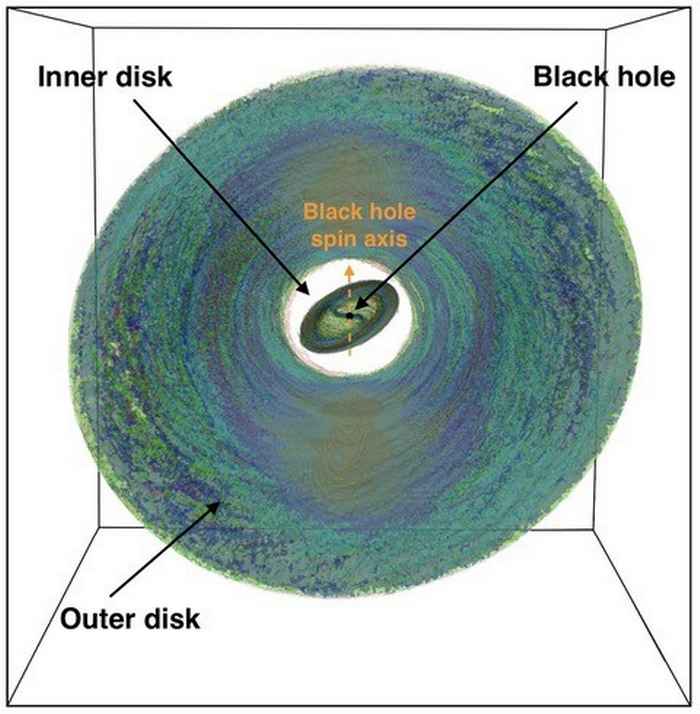Astronomers discover reason for flickering in black-hole accretion discs
28 November 2022

QPO's
Black holes (both stellar black holes and those found at the centres of galaxies) feed on the matter surrounding them, driving the most high-energy processes in the universe. Matter trapped in the immense gravitational potential of a black hole swirls around it, forming what is known as an accretion disc, which shines brightly at X-ray frequencies. Quasi-periodic oscillations (QPOs), variations in the intensity of these X-rays, appear to be a common feature of the accretion process and are observed in all black holes.
High-frequency quasi-periodic oscillations (HFQPOs) are of particular interest to astronomers, because they are thought to originate in the innermost part of the accretion disc, close to the black hole, where gravity is extreme and the effects of general relativity prevail. Once we understand the underlying mechanism responsible for the production of HFQPOs, HFQPOs can be serve as an important source of information about the accretion process, the nature of black holes and gravity. One might even say that they are a cosmic lab of sorts, in which we can hold Einstein's general theory of relativity to the test.
'Breathing' motion
The team was caught by surprise when they discovered a HFQPO in the simulation Gibwa Musoke explains: “We might have found a possible origin for HFQPOs. In the simulation, the tilted accretion disc tears in two, forming an inner disc and an outer disc. The inner disc undergoes a 'breathing' motion, with the disc rapidly expanding and contracting. This marks the first time that this breathing motion in thin, tilted discs has been shown to result in the production of HFQPOs in a tilted disk simulation. The result brings us one step closer to using them as a powerful diagnostic tool to understand accretion and the evolution of black holes."
Numerical simulations that account for the effects of general relativity and magnetic fields are important for modelling accretion discs around black holes and have the potential to uncover the mysteries surrounding QPOs. So far, the vast majority of these simulations have modelled thick accretion disks that are aligned with the black hole's rotation axis. Simulations of thin, highly tilted accretion discs, however, are extremely difficult to perform and require extreme computing power. The advanced simulation of a very thin, highly tilted accretion disc with respect to the black hole's rotation axis is among the largest astrophysical simulations ever performed.
Publication details
G. Musoke, M. Liska, O. Porth, Michiel van der Klis, Adam Ingram. Disk Tearing Leads to Low and High Frequency Quasi Periodic Oscillations in a GRMHD Simulation of a Thin Accretion Disk. Preprint: https://arxiv.org/abs/2201.03085